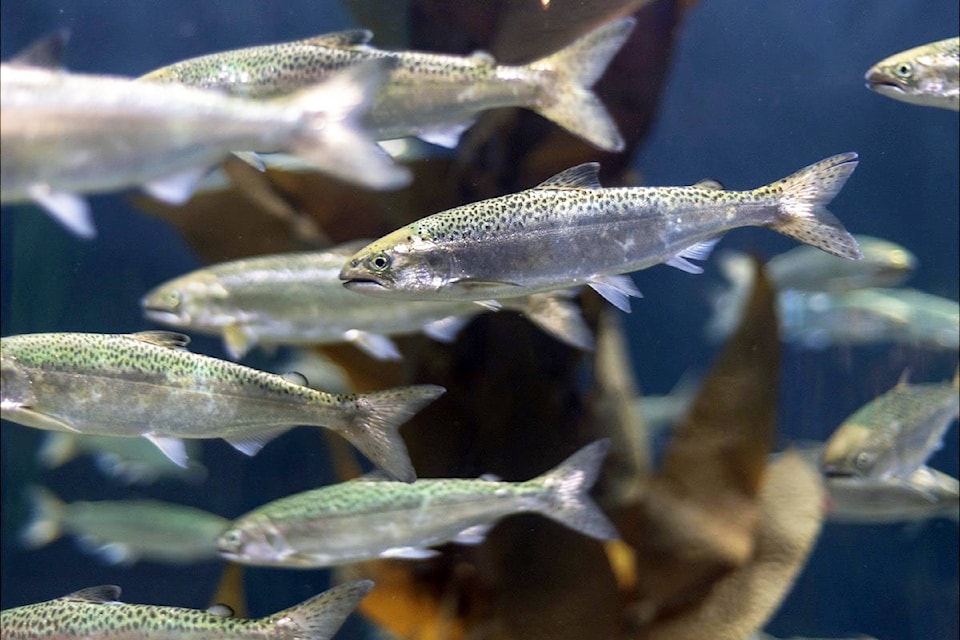In rivers throughout B.C., wild salmon are swimming downstream towards the ocean, oblivious to the pandemic that has changed our lives. Wild fish are not swimming alone: They migrate with millions more salmon released from hatcheries. A growing body of evidence shows that salmon hatcheries harm wild fish and are a poor return on investment.
In the last 50 years, hatcheries have become entrenched in B.C. However, as governments plan economic stimulus programs, we can invest in projects that will benefit British Columbians over the long term. Wild salmon contribute to food security, generate income for fisheries-based communities, and sustain the lands and wildlife that we all care about.
RELATED: Fund boosts salmon enhancement efforts in Port Renfrew
Wild salmon are in decline across the province, and in 2019, we saw the worst year on record for many populations of sockeye, Chinook, coho, chum, pinks and steelhead. Last year’s harvest of one million fish was less than three per cent of the salmon caught in 1993, and many populations did not have enough spawning adults to sustain themselves. Amidst this decline, there is increasing public pressure to augment wild populations with more hatchery fish.
Wild and hatchery salmon are not the same. Just one generation in a hatchery can change hundreds of genes. Multiple generations of breeding in buckets and rearing in tanks produces salmon that are fit for hatcheries, but not the wild.
Wild salmon are uniquely adapted to survive the conditions they experience, from streams to the ocean and back. Given the chance, wild salmon populations recover quickly from natural and human-caused disturbances. Hatchery salmon are a poor replacement. When hatchery fish spawn in the wild, they diminish the genetics of wild populations and reduce overall salmon production.
RELATED: $1-million salmon hatchery eyed for Sooke
Fisheries and Oceans Canada DFO operates 15 hatcheries and oversees 19 facilities run by First Nations and community groups. Collectively, they release approximately 300 million salmon each year, with most fish coming from DFO’s large-scale production hatcheries. These numbers are at risk of growing if Fisheries Minister Bernadette Jordan and Premier John Horgan choose to pursue a simplistic approach to salmon recovery.
The hatchery approach assumes that increasing the number of young salmon entering the ocean will increase the number of adult salmon that return, but it’s not that simple.
Our rivers and ocean can only produce so many salmon, because they have limited food. Numerous young hatchery salmon can outcompete young wild salmon, making them less likely to survive. Hatchery steelhead eat wild coho and Chinook fry.
In the North Pacific Ocean, wild salmon compete for food with over five billion hatchery fish released by countries around the Pacific Rim. Forty per cent of salmon in the North Pacific are now born in a hatchery, rather than a stream.
There are fewer, smaller wild salmon returning to B.C. rivers, because of these massive hatchery releases. A recent study, led by DFO scientist Brendan Connors, found that Fraser River sockeye returns were 15 per cent smaller in 2005-2015 because of competition with hatchery pink salmon. Increasing hatchery production will only make the problem worse.
In 2005, DFO promised to develop a framework to comprehensively assess the risks of hatchery production to wild salmon, under the Wild Salmon Policy. Fifteen years later, that work has not been completed. What’s clear is that hatcheries have failed to recover wild salmon runs or to fulfill the ecological role that wild salmon performed in streams and forests across the province.
For taxpayers, hatcheries are a poor investment. Very few hatchery fish survive to return as adults. The capital and operating costs are high, but the return on this investment can be less than 0.01 per cent. Rates of return for DFO hatcheries are difficult to obtain, but Leavenworth Hatchery, in Washington State, spends $4,800, on average, to produce each Chinook caught in fisheries.
Hatchery fish are replacing wild salmon, and it’s costing us dearly. Minister Jordan and Premier Horgan should invest in infrastructure and restoration to improve the health of B.C. rivers — the most efficient, cost-effective and productive salmon hatcheries we have.
Investing in hatcheries is committing to a future without wild salmon.
•••
Vanessa Minke-Martin is a salmon ecologist based in Victoria; Aaron Hill is the executive director of Watershed Watch Salmon Society; Greg Knox is the executive director of SkeenaWild Conservation Trust; Misty MacDuffee is the wild salmon program director at Raincoast Conservation Foundation; Jeffery Young is a senior science and policy analyst at the David Suzuki Foundation.



